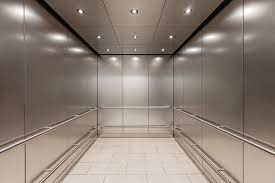Elevator ceilings are a great addition to any home with an elevator. They offer a sleek and modern aesthetic that can make your elevator stand out and add value to your property. If you are planning to install an elevator ceiling in your home, here are some tips to keep in mind.
Choose the Right Material
Elevator ceilings are available in a range of materials, including metal, glass, and wood. Each material has its own unique advantages and disadvantages. For example, metal elevator ceilings are durable and easy to maintain, but may not offer as much design flexibility as glass or wood.
Glass elevator ceilings can add a luxurious touch to your home, but may require more maintenance to keep them looking their best. Wood elevator ceilings offer a warm and inviting look, but may not be as durable as metal or glass. Consider your budget, style preferences, and maintenance needs when choosing the right material for your elevator ceiling.
Consider Lighting
Lighting is an important factor to consider when installing an elevator ceiling. Your elevator ceiling can be illuminated with built-in lights or through natural light sources such as skylights. Built-in lights can create a dramatic effect, while skylights can make your elevator feel more open and airy.
When selecting lighting for your elevator ceiling, it’s important to consider the type of bulb you’ll be using. LED bulbs are energy-efficient and long lasting, making them a popular choice for elevator ceilings. They also come in a range of colors and intensities, allowing you to customize the lighting to suit your needs.
Hire a Professional
Installing an elevator ceiling is not a DIY project. It requires specialized skills and knowledge to ensure that the ceiling is properly installed and safe to use. Therefore, it’s recommended to hire a professional contractor or elevator installer to handle the installation.
A professional can help you select the right materials, design the ceiling to suit your style preferences, and ensure that the installation is done correctly. They can also make sure that the ceiling meets all safety standards and regulations.
Consider the Ceiling Height
When designing your elevator ceiling, it’s important to consider the height of the ceiling. The ceiling should be high enough to allow for comfortable headroom and movement inside the elevator. A ceiling that is too low can create a cramped and uncomfortable feeling, while a ceiling that is too high can feel cavernous and empty.
A professional installer can help you determine the appropriate height for your elevator ceiling based on the size of your elevator and the needs of your family or guests.
Think About Maintenance
Like any other part of your home, elevator ceilings require maintenance to keep them looking their best. Depending on the material you choose, maintenance needs may vary. Metal elevator ceilings are easy to clean and maintain, while glass and wood may require more frequent cleaning and upkeep.
Consider your lifestyle and how much time you have available for maintenance when selecting a material for your elevator ceiling. Additionally, be sure to follow the manufacturer’s instructions for cleaning and maintenance to ensure the longevity of your ceiling.
In conclusion, installing an elevator ceiling can add a touch of elegance and sophistication to your home. However, it’s important to choose the right material, consider lighting, hire a professional, think about ceiling height, and think about maintenance. With the right approach, your elevator ceiling can be a beautiful and functional addition to your home that you’ll enjoy for years to come.

